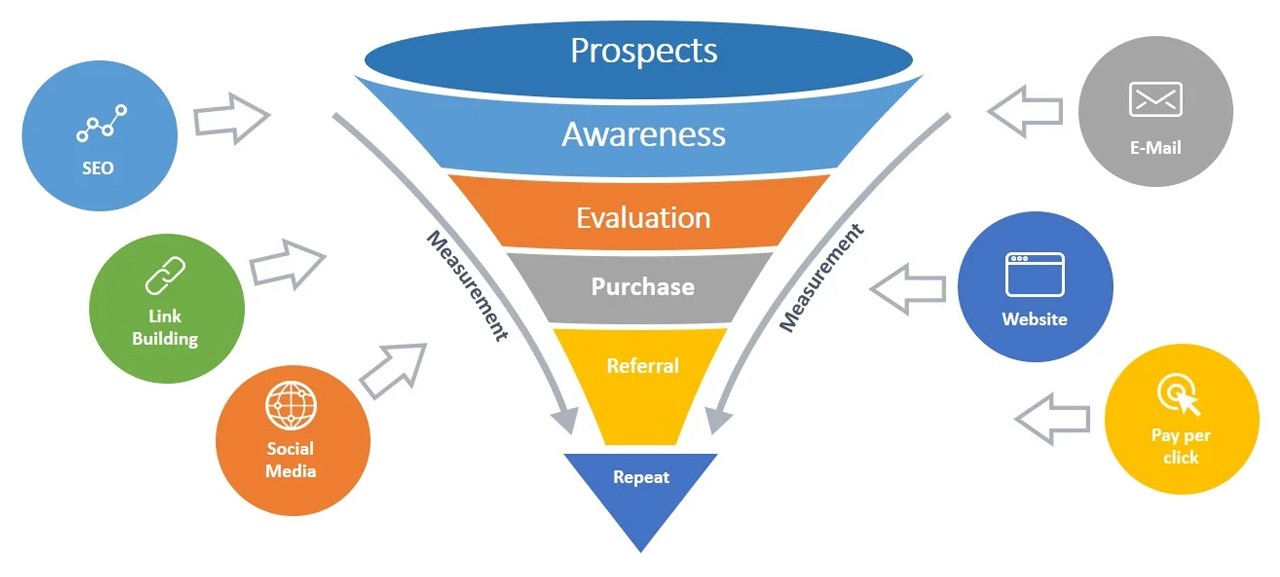
If you’re a small business owner looking to increase sales and grow your customer base, you’ve probably heard the term “sales funnel.” But what exactly is it, and why is it so important to your marketing strategy?
In this guide, we’ll break down what a sales funnel is, why it matters, and how you can build one that turns casual browsers into loyal customers.
What Is a Sales Funnel?
A sales funnel is a step-by-step process that guides potential customers through the journey of discovering your brand to making a purchase and beyond. It’s called a “funnel” because the number of people decreases at each stage—many people may discover your business, but only a percentage will take action and convert into paying customers.
The Four Main Stages of a Sales Funnel
Most sales funnels are built around four core stages:
1. Awareness
This is the top of the funnel. At this stage, potential customers first learn about your business, product, or service. They may find you through a social media post, a Google search, a blog article, or an online ad.
Your goal here is to attract attention and generate interest. Content marketing, social media campaigns, SEO, and paid ads are key tools in this stage.
2. Interest
Once someone is aware of your business, the next step is to spark their interest. They begin to engage more deeply by reading your content, visiting your website, or signing up for a newsletter.
This is the time to provide helpful, relevant information that positions your brand as a trusted authority. Consider using lead magnets like ebooks, webinars, or free consultations to capture their contact details.
3. Decision
Now the lead is seriously considering a purchase. They might compare you to competitors or look for reviews and testimonials. Your job is to show them why you’re the best choice.
Offer compelling reasons to choose you—such as limited-time offers, case studies, product demos, or strong guarantees.
4. Action
At this stage, the prospect becomes a customer. They make a purchase, book a service, or take another desired action. Your funnel has done its job—but the journey doesn’t end here.
Follow up with onboarding emails, loyalty programs, or upsell opportunities to increase lifetime value and turn one-time buyers into repeat customers.
Why Every Small Business Needs a Sales Funnel
Without a structured sales funnel, you risk losing potential customers because there’s no clear path guiding them toward a purchase. A well-designed funnel:
-
Helps you understand customer behavior
-
Improves your marketing efficiency
-
Increases conversion rates
-
Maximizes your return on ad spend
-
Builds long-term customer relationships
Whether you’re selling physical products, offering services, or running a local business, a sales funnel can transform random interest into reliable income.
How to Build a Simple Sales Funnel
You don’t need fancy tools or a massive budget to start. Here’s a basic sales funnel framework you can apply today:
-
Create Awareness
Start with content that answers common questions your audience is asking. Use social media, blogs, and SEO to drive traffic. -
Capture Leads
Use lead magnets to collect emails. A free guide or discount code can work well. -
Nurture Prospects
Set up email sequences or retargeting ads to build trust and educate your leads. -
Close the Sale
Optimize your landing pages and checkout process. Add testimonials, clear pricing, and strong calls to action. -
Retain and Upsell
Use follow-up emails, loyalty programs, or new offers to keep customers coming back.
A sales funnel is not just a marketing buzzword. It’s a proven framework that helps you attract the right audience, build trust, and convert interest into revenue. As a small business owner, mastering the basics of the sales funnel can make a big difference in your growth strategy.
Start small, test what works, and continue to refine your funnel as your business evolves. The more clearly you can guide your prospects through each stage, the more successful your marketing efforts will be.


